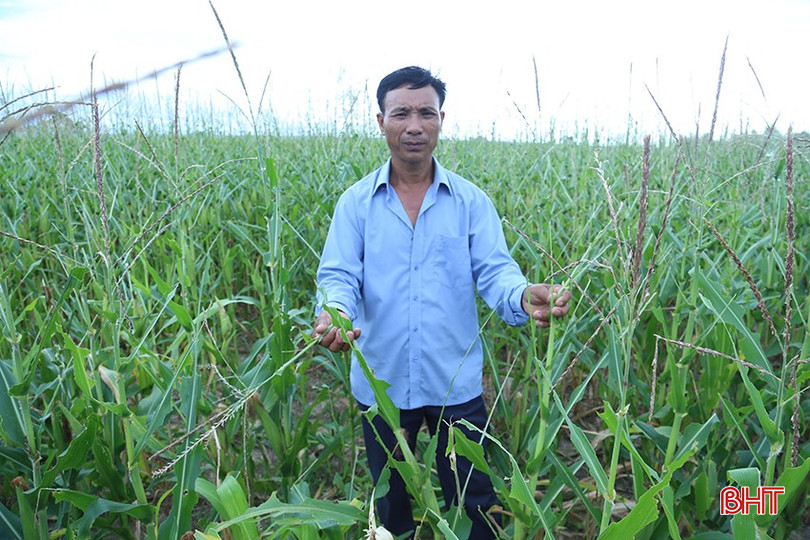
More than 2 sao of sugarcane, 4 sao of corn and 1 acre of elephant grass of Mr. Cao Van Hung were severely damaged by bamboo locusts for nearly a week.
In recent days, Mr. Cao Van Hung's family (Hoa Son village, Cam Hung commune) has been struggling to find every way to deal with the rampage of yellow-backed bamboo locusts - an insect species that has never appeared before in the locality. "This species has a hard, strong body and is very destructive. The entire 2 sao of sugarcane, 4 sao of corn and 1 mau of elephant grass of the family were eaten up within nearly a week. We had to join hands, set up nets, and use nets all night to control the density, not letting it spread to other areas," Mr. Hung worriedly shared.
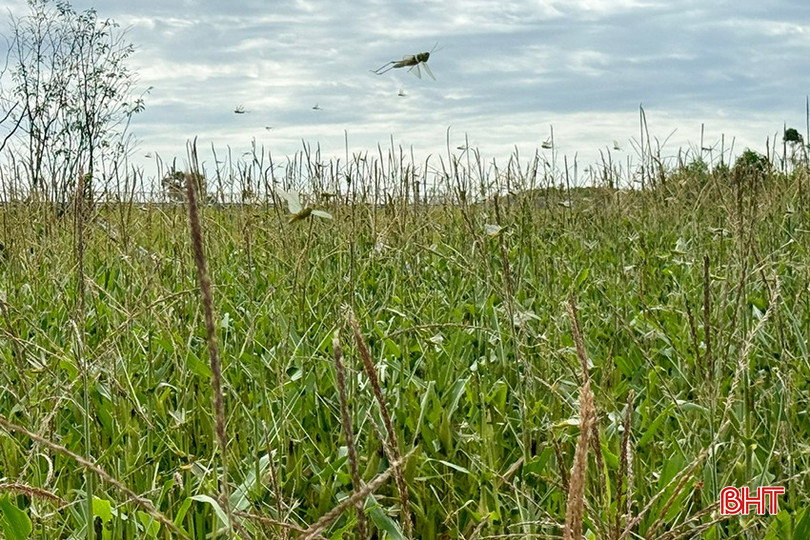
Dense swarms of bamboo locusts ate all the corn leaves.
More worryingly, bamboo locusts have begun to invade and damage some rice fields in Cam Due commune. Ms. Nguyen Thi Ngo (My Ha village, Cam Due commune) said: “We are very worried because locusts have damaged crops in the garden and now spread to the rice fields. This species is very concentrated, starting to bite off the stems, making it impossible for the rice to recover. I have to combine using a net and spraying pesticides according to the instructions of technical staff to control it in time."
According to Mr. Nguyen Ngoc Nam - Chairman of Cam Due Commune People's Committee, bamboo locusts often appear in bamboo bushes, reeds,... in the forest. When the food source is exhausted, they will move in swarms to the plains, attacking crops at a rapid rate. Currently, the commune government has coordinated with specialized agencies to conduct field inspections, provide initial response measures and report to superiors for support when necessary.
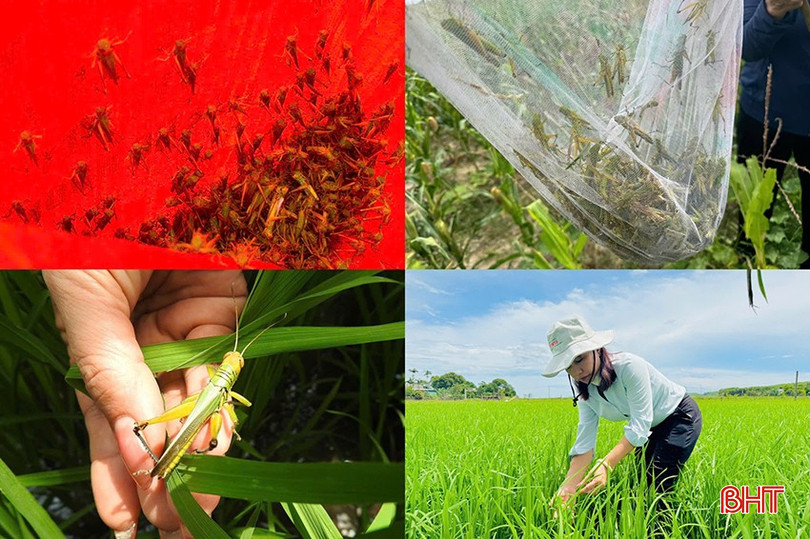
Bamboo locusts have "flooded" into some rice and corn fields of farmers.
According to the Department of Crop Production and Livestock of Ha Tinh province, the yellow-backed bamboo locust is a pest that has appeared for the first time in the locality with high density and complicated developments. Currently, the bamboo locust has moved from the Ke Go protective forest area, the forest edge, etc., spreading and causing damage to food crops, especially rice, corn, etc. in the communes of Cam Due, Cam Hung, Cam Lac, etc. The risk of continuing to spread and cause damage on a large scale in the coming time is very high.
Faced with the unusual developments of the pest, the Department of Crop Production and Livestock (Department of Agriculture and Environment of Ha Tinh province) coordinated with the Center for Crop Production and Plant Protection of Region IV (Department of Crop Production and Plant Protection) to directly go to the locality to inspect the situation and provide guidance on response measures in Cam Hung and Cam Due communes.
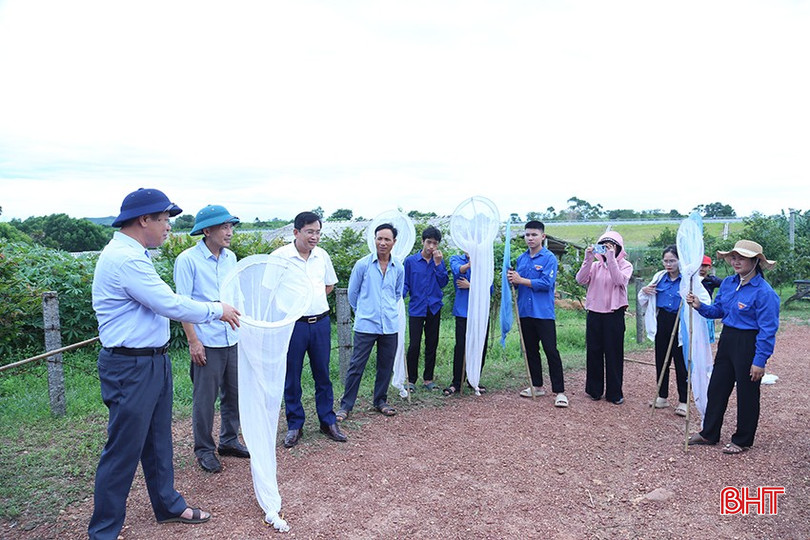
Mr. Nguyen Tuan Loc - Director of Plant Protection Center of Region IV, guides some measures to kill bamboo locusts in Cam Hung commune.
According to Mr. Nguyen Tuan Loc - Director of the Plant Protection Center of Region IV, the "golden time" to eradicate the yellow-backed bamboo locust is when it nests and is in its juvenile state. However, in Ha Tinh, when this species was discovered, most individuals were already adults, making prevention and control work more difficult and less effective.
Through actual monitoring, this species has also appeared and caused damage in many localities such as Quang Tri, Nghe An , Thanh Hoa. This is a species with strong appetite, high density and fast mobility. Adult individuals have a life cycle of 30 - 60 days, a period long enough to cause serious damage if not controlled promptly. The optimal solution now is to launch a campaign to kill locusts on the spot; organize comprehensive prevention by comprehensive measures such as catching nets, lighting lamps to attract adult locusts; spraying chemicals according to the "4 rights" principle when necessary.
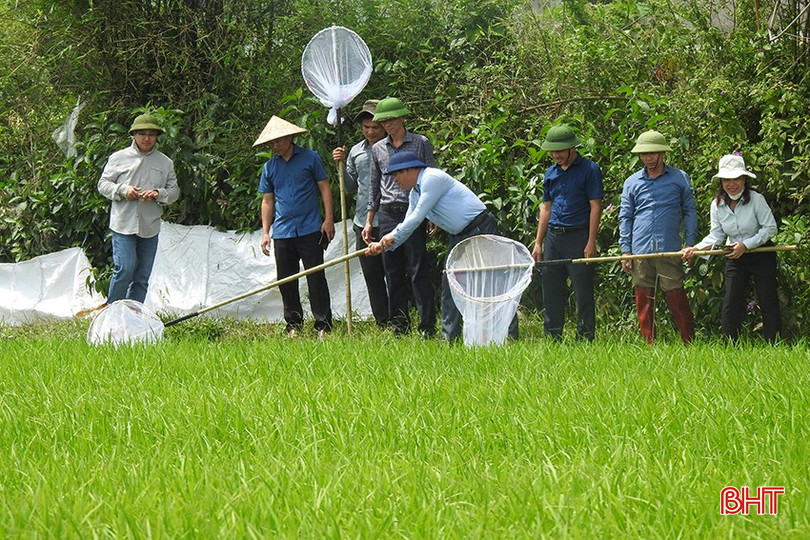
The Department of Crop Production and Livestock (Department of Agriculture and Environment of Ha Tinh province) coordinated with the Center for Crop Production and Plant Protection of Region IV (Department of Crop Production and Plant Protection) to directly go to the locality to inspect the situation and provide guidance on response measures.
The Department of Crop Production and Livestock has also advised the Department of Agriculture and Environment of Ha Tinh province to issue a document directing localities, professional staff and people to synchronously deploy solutions to prevent and control summer-autumn pests, with special attention paid to eradicating yellow-backed bamboo locusts to protect crops. In addition to organizing zoning and thorough treatment from the beginning, the professional sector also encourages people to step up manual catching of locusts for animal feed, fertilizer, etc.
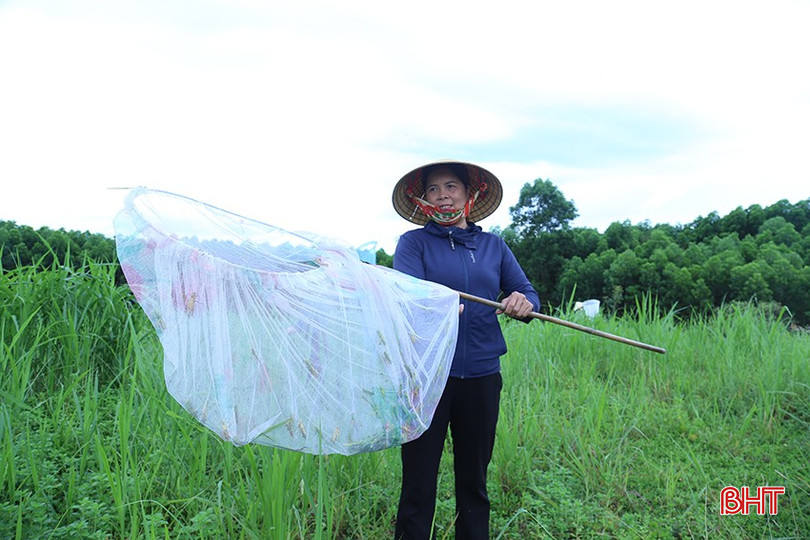
Encourage people to step up manual catching of locusts for animal feed, fertilizer, etc.
In case of increased locust density, it is necessary to use specific pesticides for spraying. The effective time for spraying is early morning or cool afternoon - when locusts are less mobile. When organizing spraying, it is necessary to carry out concentrated spraying, spraying around the outbreak and spraying in a rolling manner in each area to completely destroy and minimize the risk of spreading over a large area.
Along with that, local authorities, the Forest Protection Management Board and forest owners need to proactively investigate and monitor locust density in high-risk areas such as forest edges, protective forests, bamboo, cassava, corn, sugarcane, elephant grass, etc. to promptly detect and handle, preventing an epidemic from developing.
The yellow-backed bamboo locust and several other bamboo-damaging locust species (collectively called bamboo locusts) belong to the group of swarming locusts. When they reach adulthood, they can gather in large swarms and migrate to find food sources and egg-laying sites. This is a pest species that can move quickly, has great destructive power, and is difficult to control.
The yellow-backed bamboo locust has been causing damage in our country since 2008, mainly damaging forestry plants such as bamboo, reed, rattan, etc. From 2016 to 2018, the bamboo locust has damaged an area of nearly 4,000 hectares per year on forestry crops and some agricultural plants (upland rice, corn, tobacco, banana, arrowroot, etc.)
When density is high and food is lacking, bamboo locusts migrate from protected forest areas and forest fringe areas to the plains, causing damage to rice and upland crops.
In case of necessity, to minimize the spread of locusts over a large area, moving down to rice fields, and damaging crops, use pesticides with the following active ingredients: Thiosultap-sodium, Imidacloprid, with recommended concentrations and dosages for spraying 1 hectare (10,000 m2 ) as follows:
Neretox 95WP: Mix 1 kg of medicine into 600 liters of water
Anvado 100WP: Mix 0.75 kg of medicine into 600 liters of water.
Note: During the use of pesticides, you must comply with the "4 rights" principle and collect used pesticide packaging according to regulations.
Source: https://baohatinh.vn/nong-dan-ha-tinh-xoay-du-cach-diet-chau-chau-tre-gay-hai-cay-trong-post291513.html


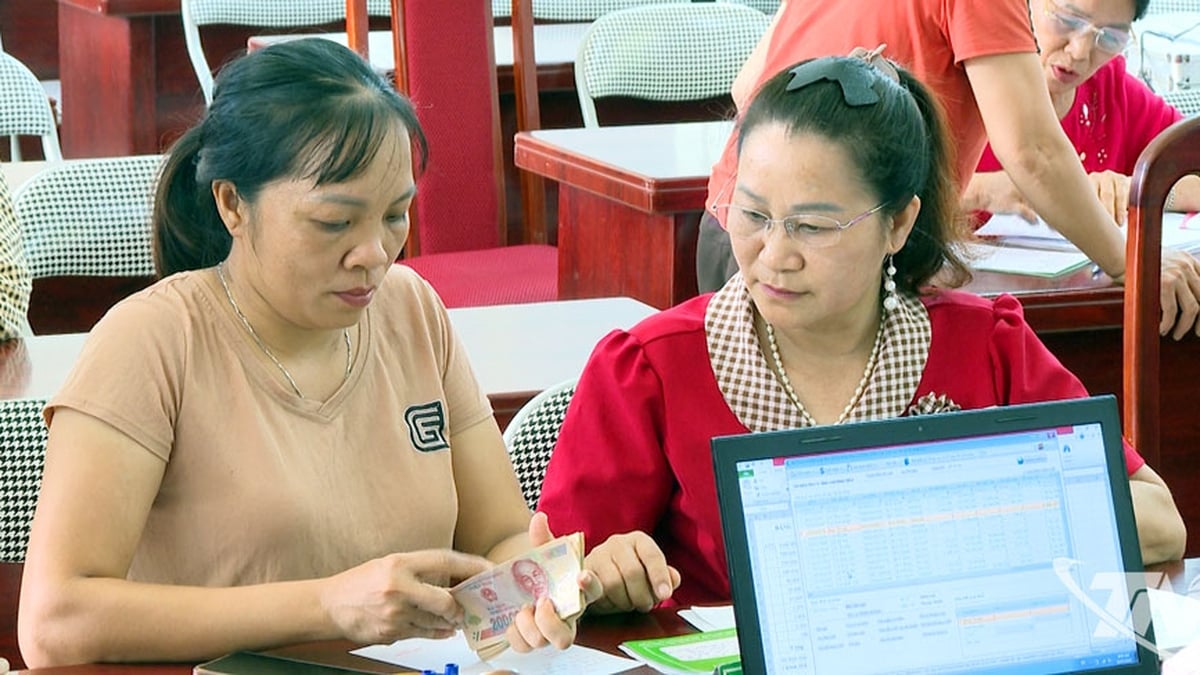
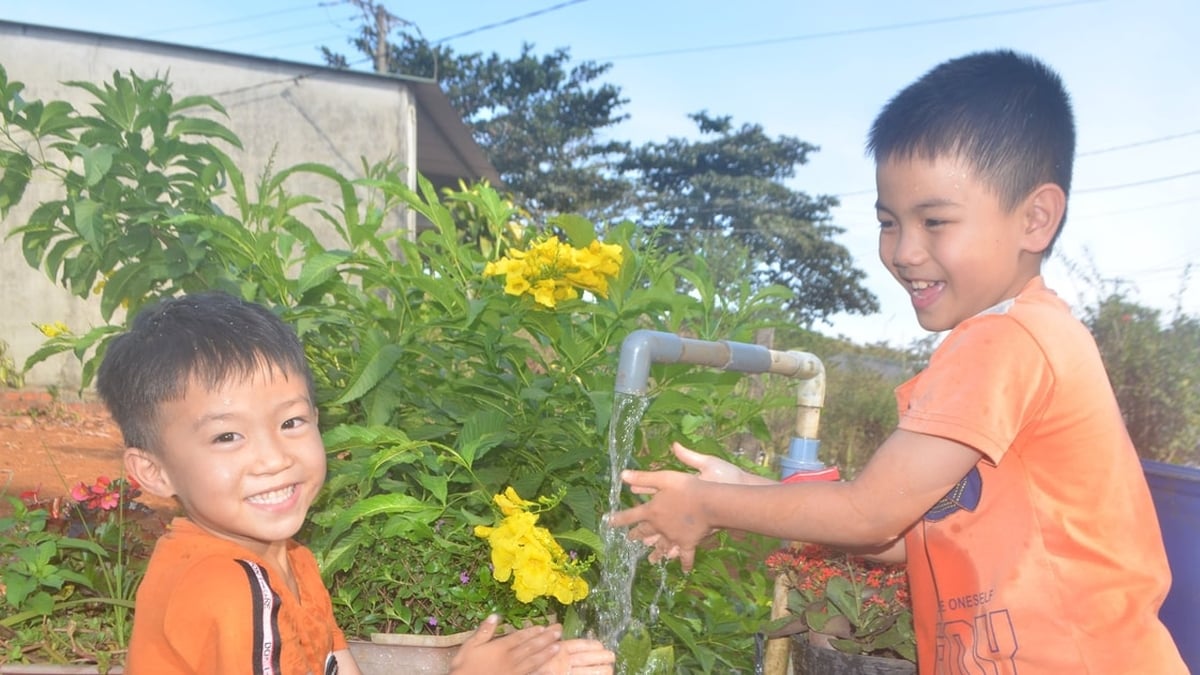

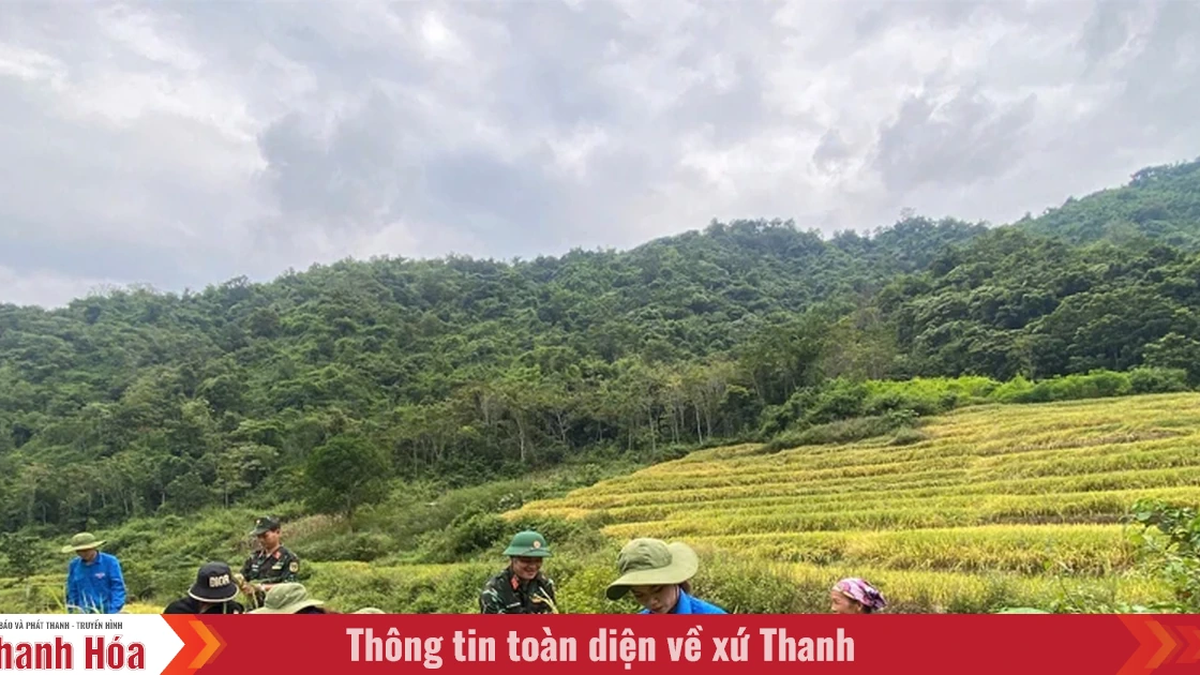
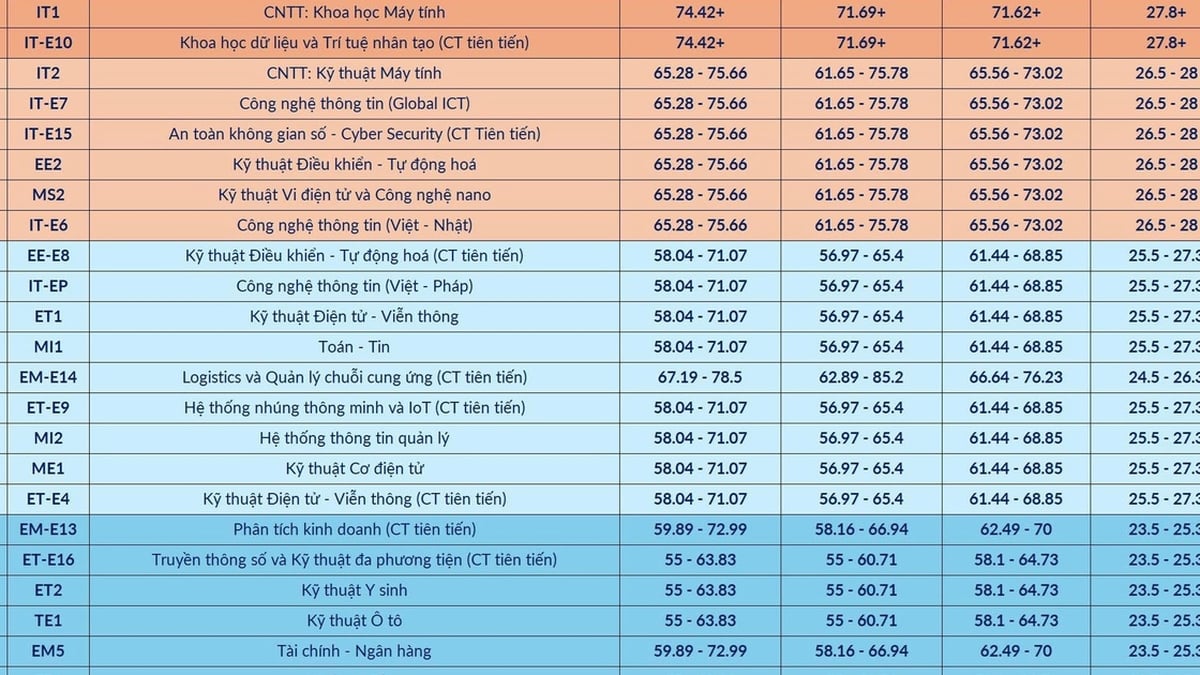
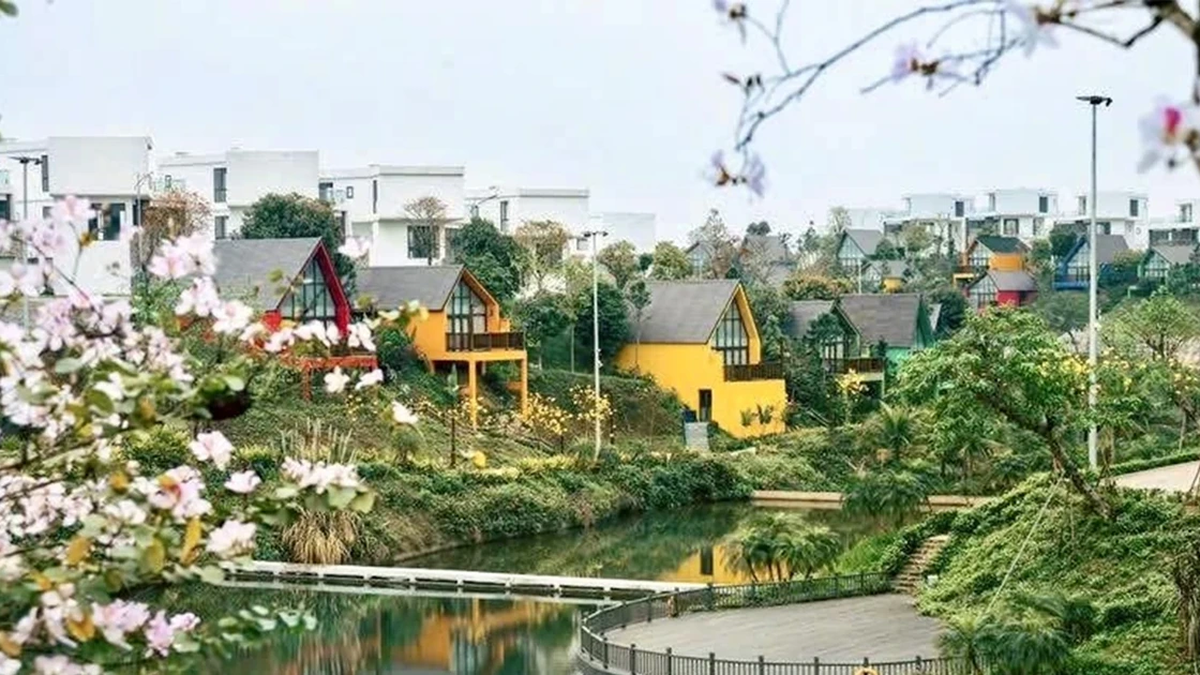


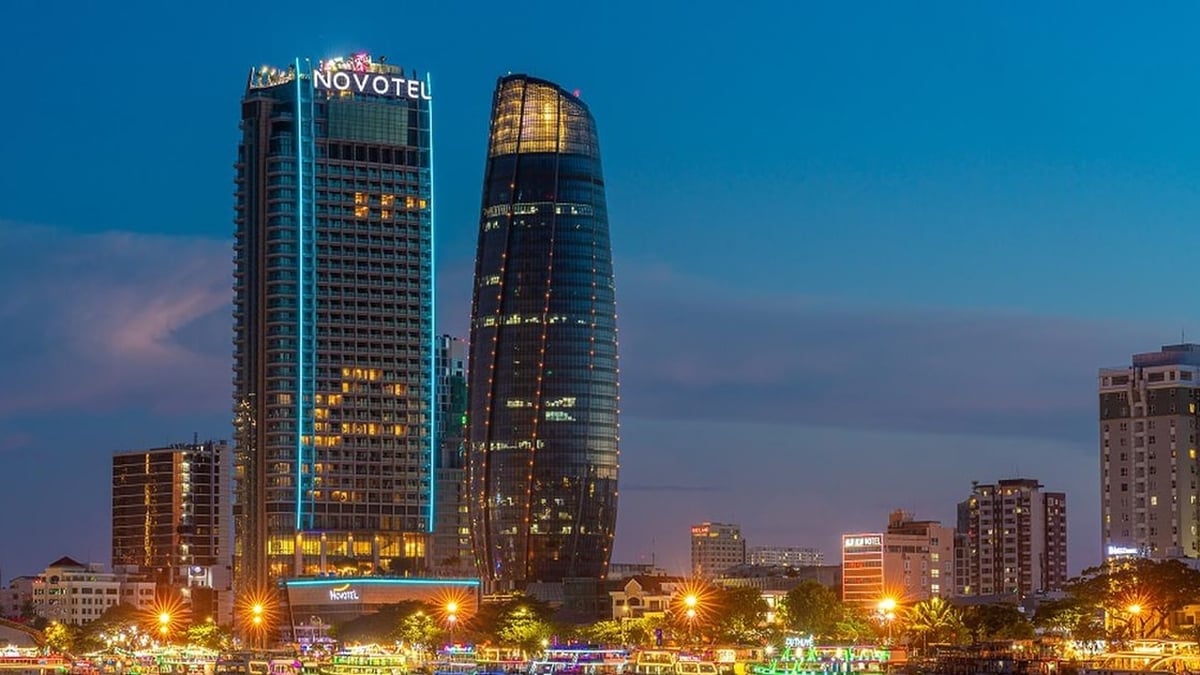





























































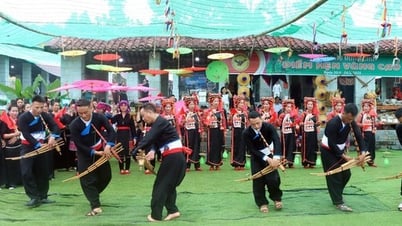













![[Infographic] In 2025, 47 products will achieve national OCOP](https://vphoto.vietnam.vn/thumb/402x226/vietnam/resource/IMAGE/2025/7/16/5d672398b0744db3ab920e05db8e5b7d)














Comment (0)